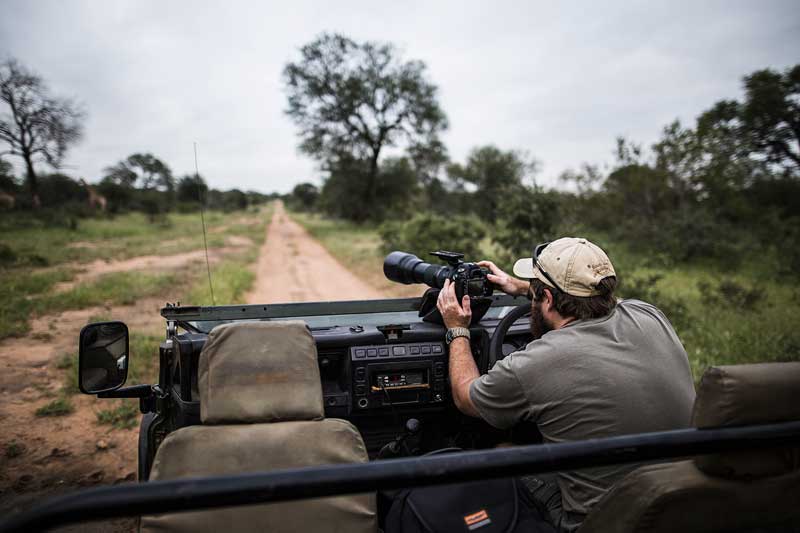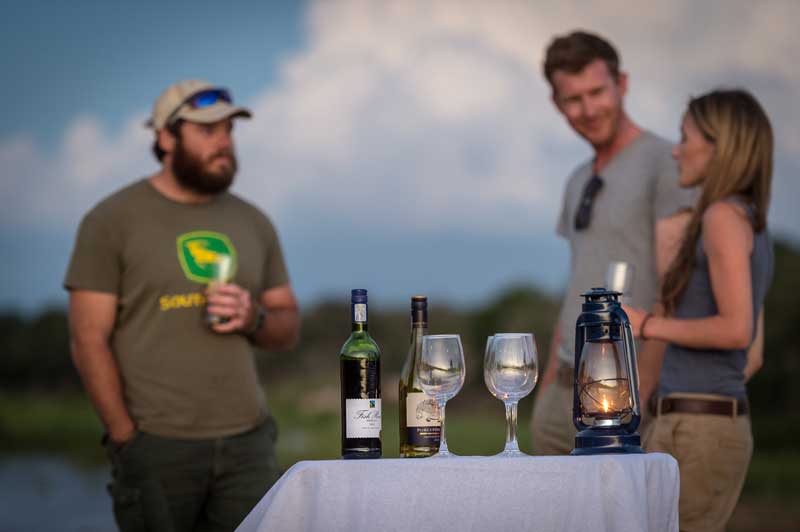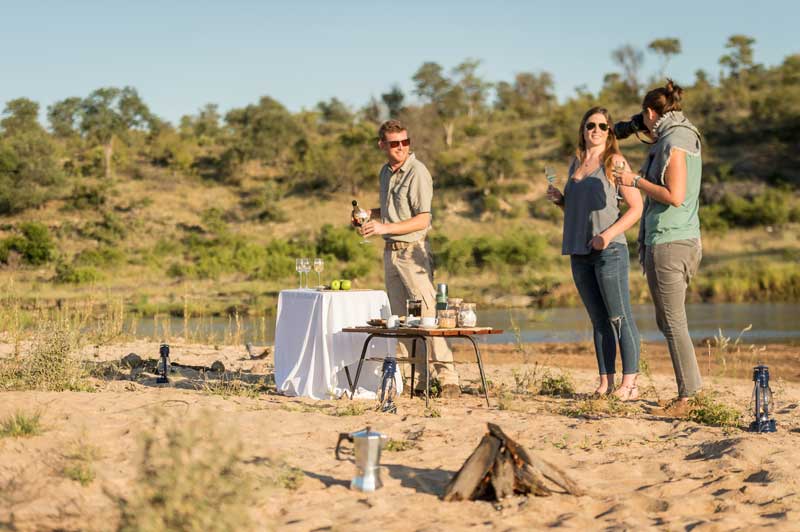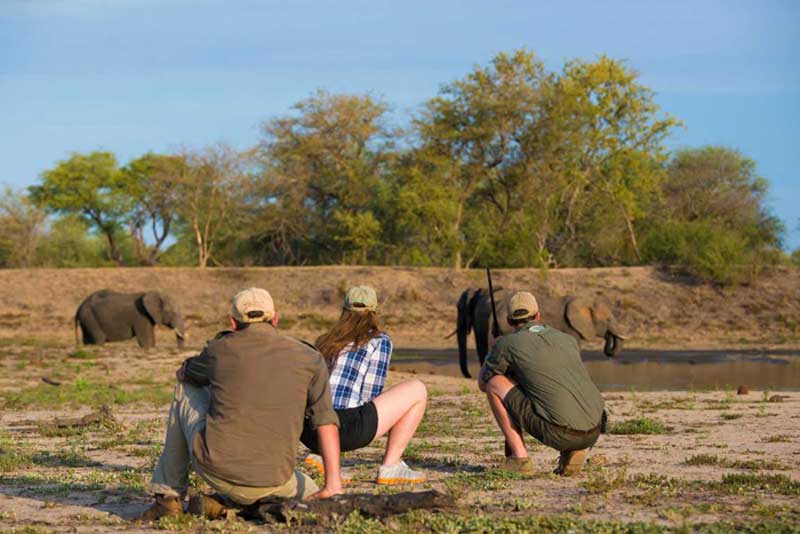Packing for a safari
We’ve seen plenty of first-time khaki clad travellers disembarking from vehicles wearing pith helmets, hiking boots and heavy-duty clothing to protect them from Africa’s harshest elements. Many travellers come from the bustling lights of the city with a notion that they must be protected from the wild – and being fully outfitted in khaki will surely do the trick. We do understand that going on safari is an excuse to adorn your wardrobe with a splattering of camo, khaki and green. But there does need to a balance – the idea is not to dress like a Marula tree.
Although this is the wild, you are not deserted in the midst of deep, dark and wild Africa. Even the low-budget safari lodges will have slow wifi connections in the midst of the Okavango Delta. Expect rustic Africa with slivers of unexpected extreme luxury and hints of the city life.
There is nothing more beautiful and strange than being surrounded by the waterways of the Delta in an untouched paradise, while simultaneously connecting to Instagram.
Lodges and camps are well-equipped and will provide and tend to most of your needs, but here’s some advice.
Here’s our expert advice on packing for a safari.
Digital Gear and Gadgets
1. Pack your best DSLR and a zoom lens. There will be times when the vehicle cannot get close enough to a sighting and your finest zoom will come handy. Most of the time you’re in the game viewer, so it’s the perfect time to bring your heavy camera equipment that is normally a pain to lug around.
2. Tripods are cumbersome and you will be on the vehicle, mekoro or boat while searching for wildlife. To keep your camera steady, think of packing one of those nifty “Gorillagrips” which is a bendable grip that can clip onto one of the bars on a game viewer. It’s also very light and easy to take in your luggage.
3. Your Fitbit is not needed – you will be eating, enjoying sundowners, relaxing at the pool and out on game drive most of the time. Your results will embarrassing.
4. Bring your tablet, camera WiFi connector and laptop if you need it. Most camps have WiFi and you will have plenty of down time during the day to download your photos, edit them and connect to social media. However, we do urge you to step away from the digital world and absorb the world around you.
5. Lodges and camps will have plug-points, but may not supply the correct adaptor and type of plug suited to your country.
6. Bring a headlamp or torch. There may be times when you are escorted back to your room and an extra light is needed for your own comfort.
7. Binos ! This goes without saying. What your camera can’t get through the lens, your binoculars are sure to capture.
8. It is advisable to bring a powerbank with you if your only source of taking images is your phone.
9. Don’t forget to bring a protective bag with you for all of your gear. Roads in Africa can be bumpy.
Clothing
1. Temperatures soar during the summer months. This is the period of time when you will spend most of the day reading a book and relaxing in a pool overlooking the bushveld. Pack your swimming gear – it will dry quickly, so you don’t need a variety of outfits. Even during the winter months it can be really hot, so it’s worth packing your swimming kit.
2. Your day-to-day gear should include trousers, jeans, t-shirts and casual wear. If the lodge is five star we suggest going for a casual safari chic look. Aim for muted colours and ones that don’t draw attention to yourself. Greens, nude, khaki, olives, browns and cream are just perfect and don’t distract the wildlife.
Navy and black can draw pesky bugs to your personal space, they seem to be drawn to the darker colours. We’d definitely recommend that you don’t bring too much camouflage gear – you’re not one of the anti-poaching rhino foot soldiers. In terms of materials, cotton is coolest; but there is plenty of clothing engineered for hiking, walking and outdoor pursuits.
3. Early mornings on the game viewer can be icy so we recommend you bring your down jacket ! It heats up come mid-morning, so it’s important to layer your clothing. A light fleece layered with a t-shirt and jacket would work out perfectly.
4. Shoes wise, bring trainers, walking boots and slip-slops. Comfortable walking shoes for bushveld walks are a must, as are slip-slops for back at the lodge.
5. A cap or a hat is needed to guard against the sun. Bring a beanie for winter game drives. When you’re driving quickly to get to a sighting in an open-topped game viewer, the wind really hits your ears. Gloves will be needed for nocturnal and early morning drives. Blankets are provided which certainly helps with keeping warm.
6. Waterproof jackets aren’t always necessary because rangers will provide ponchos while on game drive. A jacket may be useful for drizzly weather encountered on walks.
Luggage and Accessories
1. Lodges will have the basics – shower gel, shampoo and soaps. Anything more and you’ll need to take that with you. Just bear in mind that there are a number of eco-friendly lodges that run on solar power. This means you should avoid using hairdryers and hair straighteners.
2. Sunscreen is vital, even during the winter months. If you’re not used to being in the sun, you will battle with its powerful rays.
3. Take a daypack for when you head out on walking safaris or day trips. Always remember to pack light. Your main luggage and carry on should be minimal. Just remember that you might be taking charter flights to remote lodges and the small aircrafts might not have space for too much luggage.
It’s a Bug’s Life
1. Lodges will provide mosquito spray or lotion for your body. We suggest bringing a range of anti-bug creams for extra precautions.
2. Many guests choose not to take anti-malaria medication while on safari. The choice is yours, but we recommend you talk to your Doctor or travel clinic.





